Emiliania huxleyi
Dip a bucket in the ocean almost anywhere in the world and you will recover a few hundred or maybe tens of thousands of cells of the coccolithophore Emiliania huxleyi.
It is one of the most beautiful and widespread unicellular organisms, and in early summer it forms enormous blooms around the edges of the northwest european shelf.
Species detail
Emiliania huxleyi is one of the youngest species on Earth. It only appeared around 250,000 years ago, about the same time as Homo sapiens, and it is even more widely dispersed, occurring throughout the world’s oceans.
This minute, single-celled planktonic alga basically floats around in the upper layers of the ocean dividing and photosynthesising. However, it has a few remarkable properties:
- It produces beautiful intricate calcareous plates (coccoliths).
- It can grow explosively to produce massive blooms of milky water detectable from space.
- It has a Cheshire Cat-like ability to escape from trouble by changing form.
-

Taxonomy
Coccolithophore species are characterised by the calcareous coccoliths they form. Learn about the appearance and structure of Emiliania huxleyi, a remarkable example of bioengineering in miniature.
-

Distribution
Although Emiliania huxleyi only lives in the top part of the ocean where photosynthesis can take place, it can be found in almost every ocean around the world. Learn more about this coccolithophore's ability to thrive in a wide range of environments.
-

Biology
Get information about the internal structure and biological processes of this abundant coccolithophore, including how its coccosphere is formed.
-

Behaviour
Emiliania huxleyi may be microscopically small, but its algal blooms can be seen from space. Find out more about what causes them and where they occur.
-

Ocean acidification
Learn about the threat ocean acidification poses to all marine organisms which produce calcareous skeletons and why Emiliania huxleyi should be less vulnerable than most.
-

References
Get reference material for Emiliania huxleyi.
Images
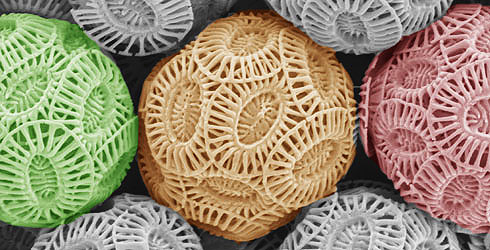
Scanning electron microscope images of Emiliania huxleyi coccospheres from a bloom in the South West Approaches, June 2004. They have been digitally coloured to show the individual coccospheres.

Diagram (left) and a scanning electron microscope image (right) of an Emiliania huxleyi coccolith.
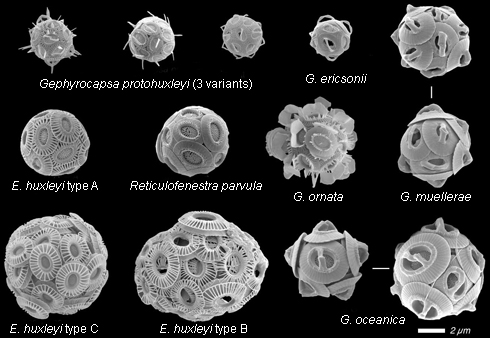
Coccolithophore species in the Noelaerhabdaceae family
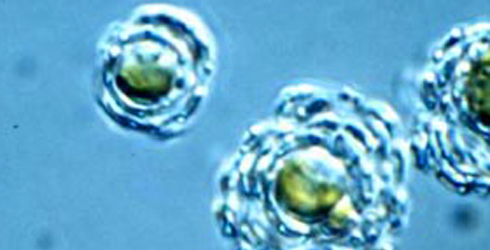
Emiliania huxleyi coccospheres, as seen under a light microscope
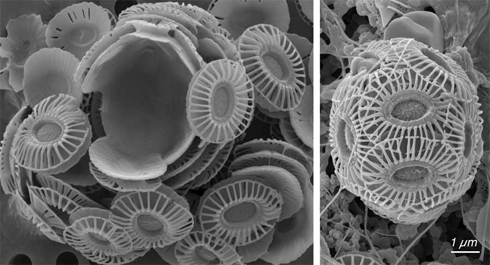
Emiliania huxleyi has an exceptionally wide distribution. These scanning electron microscope images show E. huxleyi from the tropical Atlantic (left) and Antarctic (right) oceans.
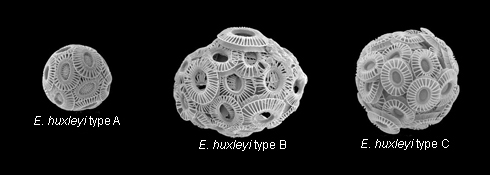
Scanning electron microscope images of Emiliania huxleyi coccospheres, some multi-layered.
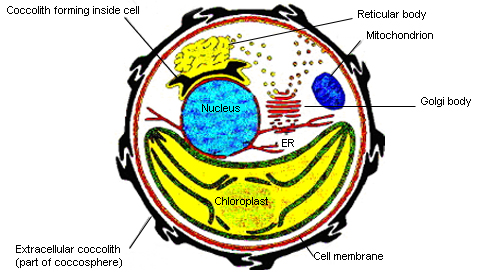
Diagram of an Emiliania huxleyi cell (modified from Westbroek et al., 1993)
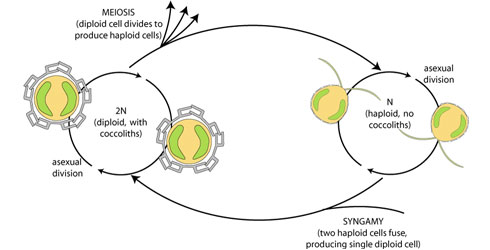
Diagram of the lifecycle of Emiliania huxleyi

A satellite image taken in June 2004 of an algal bloom off the coast of Cornwall, UK and Brittany, France.
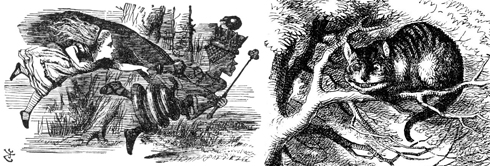
Scientists have named alternative models for the relationship between Emiliania huxleyi and the viruses that infect it ‘Red Queen evolutionary dynamics’ and ‘Cheshire Cat dynamics’, inspired by the behaviour of the characters in the book Alice in Wonderland.

Scanning electron microscope image of a partially dissolved Emiliania huxleyi coccosphere
About the author
Jeremy Young
Palaeontology researcher specialising in living and fossil coccolithophores and their biodiversity.
